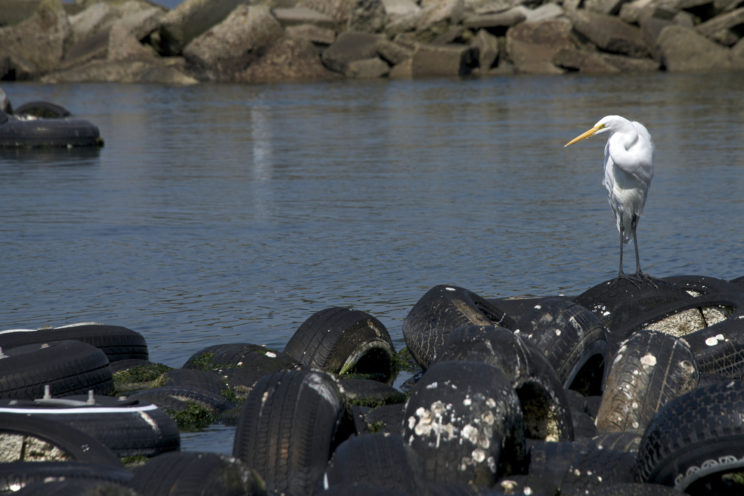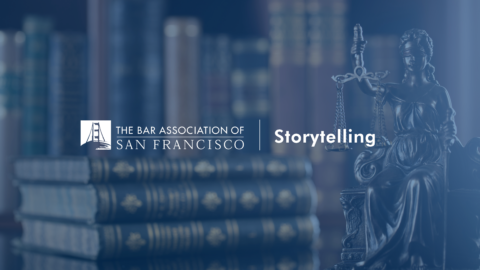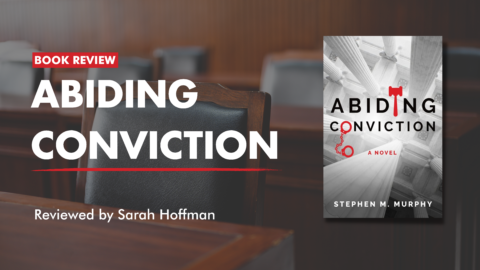Confusion and Conflict Created by COVID-19 and Shelter-in-Place Orders
Environmental investigations and remedial actions in the Bay Area were upended by COVID-19—not by the virus itself, but by the shelter-in-place orders and the various regulatory guidance directing what work could proceed. The initial shelter-in-place orders, issued March 16, 2020, by six Bay Area counties, created intense confusion regarding what environmental work in the region was allowed to proceed. At the local level, there was scant guidance from Local Oversight Programs (LOPs). At least one LOP (San Mateo County) stated that environmental investigations and cleanup were not “essential,” and could not proceed. Others were silent. In contrast, the California State Water Resources Control Board (State Water Board) explicitly stated that the shelter-in-place orders do not excuse compliance, including investigation and cleanup work, but offered a mechanism to “petition” for relief. California’s Department of Toxic Substances Control (DTSC) has not issued public guidance but has articulated a policy that is similar to the State Water Board’s approach to potentially responsible parties on a site-by-site basis. And to round things out, the United States Environmental Protection Agency’s (USEPA) own guidance on fieldwork added another layer of complexity as it is reasonably interpreted to defer to local shelter-in-place orders thus suggesting that fieldwork was on hold.
When asked, “should my project proceed?” an environmental consultant might have a different answer for each site in its portfolio, despite the similarity in site conditions and the applicable shelter-in-place order, depending on the policy of the regulatory agency overseeing the cleanup. And while it is unlikely that a responsible party would find itself subject to the active oversight of all four agencies mentioned above at any one site, it is not uncommon for a site to be jointly managed to some degree by more than one agency, i.e. LOPs and the Regional Board or DTSC and the USEPA. Thus, there could be differing, yet equally applicable guidance, at any one site.
Fortunately, revised shelter-in-place orders on May 4, 2020, removed some uncertainty for environmental projects (generally permitting environmental work to proceed outdoors) but the chronology of COVID-19 orders and subsequent agency guidance illustrates the uncertainty thrust upon regulated businesses and individuals in the Bay Area.
Businesses Confronted by the Virus Struggle with Regulatory Compliance
While the impact of COVID-19 orders on environmental projects may have been partially resolved, ongoing compliance with environmental laws will continue to present challenges for the foreseeable future based on the virus itself and related health orders. This is borne out in the example of the retailer wondering whether it will be penalized for measures designed to minimize exposure to the virus: providing shopping bags for free, supplying single-use bags, or refusing to accept empty cans and bottles at the cash register—actions intended to avoid close-proximity transactions and contact with non-disinfected items. In California, stores may not provide a single-use bag unless it is made of recycled material and must charge a minimum of 10 cents for a reusable bag or bag made of recycled material. (Pub. Res. Code § 42283.) California’s bottle redemption law generally requires a retailer that sells a beverage in a recyclable container to accept and pay redemption value at the cash register or pay an in-lieu fee of $100 a day to the state. (Pub. Res. Code § 14571.6.) Both sets of laws were adopted with laudable goals of reducing waste and encouraging recycling. Under the current circumstances, however, such practices increase the opportunity for exposure to the virus, putting environmental goals at odds with public health objectives.
Gov. Gavin Newsom’s April 22, 2020, Executive Order N-54-20 provided a sixty-day suspension of the state’s single-use bag and redemption laws in deference to the health and safety concerns triggered by COVID-19. But despite the reprieve in connection, the order’s sixty-day suspension did not apply to over 150 local jurisdictions with their own single-use bag ordinances in effect prior to January 1, 2015. (This particular “quirk” is due to the state statute’s preemption clause, which allows continued enforcement of local single-use-bag laws in effect by September 2014). And even if a similar reprieve could be obtained from the 100 plus local jurisdictions, what are retailers to do after the sixty-day suspension expires and retailers must once again confront their regulatory obligations juxtaposed with the pandemic?
Similarly, entities that operate statewide will find that relief available in one region is not necessarily available in the Bay Area, despite similar COVID-19 and regulatory challenges. As an example, the South Coast Air Quality Management District has published an extensive COVID-19 Enforcement Discretion Policy, providing relief to regulated entities impacted by COVID-19. The Bay Area Air Quality Management District has not published a similar policy.
The Regulated Community’s Role in the Pandemic Response
As more businesses are permitted to reopen in the Bay Area, operators will continue to feel the strain of new COVID-19 regulations superimposed on already existing laws. This is particularly true for the essential businesses that must remain open to provide essential services to the public such as keeping the lights on, ensuring that medicine is available, and keeping the pantries stocked. But grocers, pharmacies, and many big-box stores, in particular, stand out from other businesses. Not only must these stores adopt measures to protect their own employees from COVID-19 but they are also charged with policing the public who enters their facilities. The obligation goes beyond simply limiting the number of people in a given store and requires that these retailers enforce COVID-19 health orders: no facemask – no service. This “private enforcement” of the health orders is an integral part of a scheme designed by public health officials to “flatten the curve” and reopen the state’s economy. It’s also a scheme that on more than a few occasions has been met with public resistance. The majority of businesses have risen to the occasion and now find themselves a part of a different sort of “public-private partnership,” having become a material element of the apparatus necessary to stem the tide of COVID-19 infections.
The cooperation of essential businesses, many of which are a part of the regulated community, are a necessary part of the COVID-19 response—essential to moving California to a post-COVID “new normal.” As regulators and the regulated community navigate these uncharted territories in the collective response to COVID-19, there will undoubtedly be fits and starts. It is reasonable, therefore, for both regulators and the regulated community in California to attempt to harmonize the existing maze of regulations and guidance that impact day-to-day public health, safety, and the environment with a new layer of ever-evolving COVID-19 heath orders.
Collaboration Is the Best Plan for Sustainable Long-Term Compliance
For the regulated community, this means frank communications with regulators regarding what is and what is not working. Potential and real conflicts created at the intersection of COVID-19 health orders, disease etiology, and existing laws need to be promptly communicated to the agencies responsible for enforcement with a request for relief and collaborative dialogue. This also means making a good faith effort to remain in compliance, to the extent practicable, and documenting the steps taken to do so.
For regulators, at all levels, there needs to be a mechanism to timely identify such conflicts and an openness to address and collaboratively resolve concerns raised by the regulated community. This will require agencies to do two things. First, every agency should have a conspicuously published COVID-19 policy on its website that, at a minimum, creates a specific channel for communication of COVID-19 matters. Second, in the case of non-compliance due to COVID-19, agencies should be willing to demonstrate flexibility to work with a regulated entity to create a realistic, and resilient, road map to long-term compliance. To this end, the State Water Board and the nine Regional Boards, should be commended for being the first to publish an easily accessible, statewide policy, that includes a mechanism for requesting regulatory relief based on COVID-19 orders. By late May, the San Francisco Regional Water Quality Control Board alone had received thirty-eight requests for relief in connection with COVID-19, twenty-five of which were granted.
The notion of “discretionary enforcement” has created some conflict among regulators. The California Environmental Protection Agency (CalEPA) issued a strong rebuke of the USEPA’s own discretionary enforcement policy. CalEPA went so far as to say that it would pick up the slack created by the USEPA’s policy. And USEPA Region IX staff has taken the position in some enforcement matters that they will continue to pursue enforcement, notwithstanding the policy directive from Washington. However, an inflexible enforcement regime makes little sense as it necessarily requires marginalizing the impact of a global health crisis. Some level of enforcement discretion is appropriate where violations have arisen due to the pandemic response or the conflicting guidance. Penalizing businesses for short-term noncompliance in the face of an unprecedented public health threat, especially where the non-compliance is a function of public health and safety initiatives, is perversely counterintuitive. The public is best served when the regulator and the regulated entity work together to achieve long-term regulatory compliance in the face of an evolving public health crisis.
Jon-Erik Magnus is an attorney at Rogers Joseph O’Donnell in San Francisco. Mr. Magnus’ practice includes defending and counseling clients in connection with environmental and regulatory matters. The opinions expressed in this article are those of the author and do not necessarily reflect the views of the law firm or its clients. This article is for informational and educational purposes only and is not offered as and does not constitute legal advice or legal opinions.



